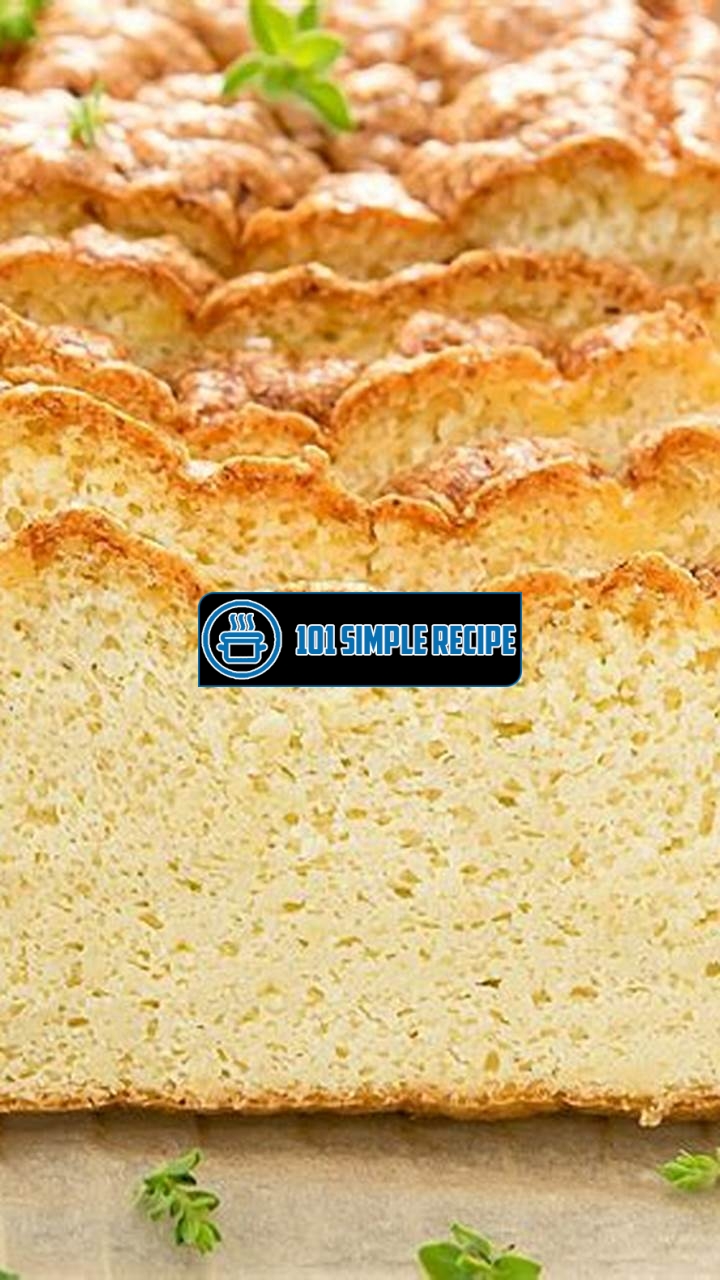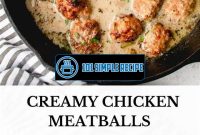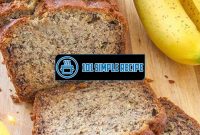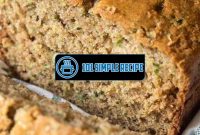Are you following the Autoimmune Protocol (AIP) diet and looking for delicious bread options that won’t compromise your health goals? Look no further! We’ve gathered some mouthwatering AIP cauliflower bread recipes that will satisfy your cravings while keeping you on track. Cauliflower is a versatile and nutritious vegetable perfect for creating gluten-free, grain-free, and dairy-free bread alternatives. Whether you’re in the mood for a classic sandwich or a savory garlic bread, we have got you covered! These recipes are not only delicious but also packed with vitamins and minerals to support your overall well-being. So, let’s dive into the world of AIP cauliflower bread and embrace a healthy and flavorful diet!

The Basics of AIP Cauliflower Bread Recipes
Discover what AIP cauliflower bread is and why it has become a popular choice for those following the Autoimmune Protocol (AIP) diet.
What is AIP Cauliflower Bread?
AIP cauliflower bread is a type of bread that is made primarily from cauliflower and adheres to the principles of the Autoimmune Protocol (AIP) diet. The AIP diet is a stricter version of the Paleo diet that aims to eliminate potential trigger foods and reduce inflammation in the body. It is commonly followed by individuals with autoimmune disorders, as well as those looking to improve their overall health.
Unlike traditional bread that is made from wheat flour or other grains, AIP cauliflower bread is grain-free and gluten-free. It provides a suitable alternative for individuals who cannot consume grains due to allergies, sensitivities, or dietary restrictions. Cauliflower serves as the main ingredient in this bread and provides a nutritious and versatile base.
Note: AIP cauliflower bread is a nutritious and flavorful option for individuals following the AIP diet or seeking grain-free alternatives.
The Benefits of AIP Cauliflower Bread
AIP cauliflower bread offers a range of benefits, making it a popular choice for those following the AIP diet. Here are some key advantages:
- Grain-Free: AIP cauliflower bread is made without grains, making it suitable for individuals with grain allergies, sensitivities, or dietary restrictions. It provides an option to enjoy bread without consuming traditional grains like wheat, barley, or rye.
- Gluten-Free: Individuals with celiac disease or gluten sensitivities can safely consume AIP cauliflower bread since it does not contain gluten. It allows them to enjoy a bread-like texture and flavor without the adverse effects of gluten.
- Low in Carbohydrates: Cauliflower is naturally low in carbohydrates compared to traditional bread, making AIP cauliflower bread a suitable choice for individuals on low-carb or ketogenic diets.
- Rich in Nutrients: Cauliflower is a nutrient-dense vegetable that provides essential vitamins, minerals, and antioxidants. By using cauliflower as the main ingredient, AIP cauliflower bread can contribute to a well-rounded and nourishing diet.
- Versatile: AIP cauliflower bread can be customized with various herbs, spices, and additional ingredients to suit different tastes and preferences. It can be used for sandwiches, toast, or as a side dish to complement meals.
Note: AIP cauliflower bread offers multiple benefits, including being grain-free, gluten-free, low in carbohydrates, rich in nutrients, and versatile in its applications.
Common Ingredients Used in AIP Cauliflower Bread Recipes
AIP cauliflower bread recipes often include a combination of the following common ingredients:
- Cauliflower: The main ingredient that provides the base for the bread.
- Coconut flour: Often added to enhance the texture and help bind the ingredients together.
- Tapioca flour: Another popular flour alternative that contributes to the overall structure of the bread.
- Eggs or egg substitutes: These help provide moisture and act as a binder in the bread.
- Herbs and spices: Various herbs and spices can be added to add flavor and enhance the overall taste of the bread.
- Sea salt: Used to season the bread and enhance its flavor profile.
- Olive oil or coconut oil: These healthy fats are often used to moisten the bread and prevent it from becoming too dry.
It is important to note that while these ingredients are commonly used in AIP cauliflower bread recipes, variations and substitutions can be made based on individual preferences and dietary restrictions.
Note: AIP cauliflower bread recipes typically include ingredients such as cauliflower, coconut flour, tapioca flour, eggs or substitutes, herbs, spices, sea salt, and healthy fats like olive oil or coconut oil.
Want to lose weight? Try this weight loss recipe that features cauliflower bread as one of its main ingredients.
Getting Started with AIP Cauliflower Bread
Are you looking for a delicious and healthy alternative to traditional bread? AIP cauliflower bread is the perfect solution! This grain-free and gluten-free bread is not only nutritious but also incredibly easy to make at home. In this article, we will guide you through the essential steps and share some useful tips for creating mouthwatering AIP cauliflower bread.
Preparing Cauliflower for AIP Cauliflower Bread
Before you begin making AIP cauliflower bread, it is crucial to properly prepare the cauliflower. Start by washing a medium-sized head of cauliflower and removing the tough outer leaves. Cut the cauliflower into florets and steam them until they become tender. Once steamed, allow the cauliflower to cool before moving on to the next step.
Important Tip: To ensure the bread has the right texture, make sure to steam the cauliflower until it is soft but not mushy. Overcooking can result in a dense and soggy bread.
Key Ingredients for AIP Cauliflower Bread Recipes
Now, let’s take a look at the key ingredients for making delicious AIP cauliflower bread. These ingredients not only add flavor but also provide important nutrients for a healthy diet:
- Cauliflower: As the star ingredient, cauliflower adds a light and fluffy texture to the bread.
- Coconut flour: This grain-free flour helps bind the ingredients together and adds a subtle coconut flavor.
- Tapioca flour: Tapioca flour enhances the bread’s elasticity and gives it a chewy texture.
- Olive oil: AIP-friendly olive oil provides moisture and richness to the bread.
- Coconut milk: This dairy-free milk creates a tender and moist crumb in the bread.
- Apple cider vinegar: Adding a small amount of apple cider vinegar helps activate the rising agents and gives the bread a slightly tangy taste.
- Sea salt: A pinch of sea salt enhances the overall flavor of the bread.
Note: You can customize the recipe by adding herbs, spices, or even vegetables like grated zucchini or diced bell peppers for extra flavor and variety.
Methods for Making AIP Cauliflower Bread
There are various methods you can use to make AIP cauliflower bread. Here, we will share a basic recipe to get you started:
- Preheat your oven to 350°F (175°C) and grease a loaf pan with olive oil.
- In a food processor, pulse the steamed cauliflower until it resembles rice.
- In a mixing bowl, combine the riced cauliflower, coconut flour, tapioca flour, olive oil, coconut milk, apple cider vinegar, and sea salt. Mix until well combined.
- Transfer the batter into the greased loaf pan and smooth the top with a spatula.
- Bake for about 45-50 minutes, or until the bread is golden brown and a toothpick inserted into the center comes out clean.
- Allow the bread to cool in the pan for 10 minutes, then transfer it to a wire rack to cool completely before slicing.
Pro Tip: To add a crunchy crust to your bread, sprinkle some sesame seeds or pumpkin seeds on top before baking.
Now that you have learned the essential steps, useful tips, and key ingredients for making AIP cauliflower bread, you can confidently embark on your culinary adventure. Enjoy the incredible taste and health benefits of this nutritious alternative to traditional bread!
If you’re looking for more delicious recipes, check out this White Castle recipe on our website!
Delicious Variations of AIP Cauliflower Bread
When it comes to AIP cauliflower bread, there is no shortage of delicious variations to try. From savory to sweet, and everything in between, the possibilities are endless. Let’s explore different flavors and additions that can be incorporated into AIP cauliflower bread recipes.
Savory AIP Cauliflower Bread Recipes
For those who prefer savory flavors, there are several mouthwatering options to choose from. One popular variation is the garlic and herb cauliflower bread. Infused with the bold flavors of garlic, rosemary, and thyme, this bread is perfect for pairing with soups or enjoying on its own as a savory snack.
If you’re looking for a little more heat, you can spice things up with a jalapeno and cheddar cauliflower bread. The combination of spicy jalapenos and sharp cheddar cheese creates a satisfyingly tangy and spicy bread that will surely tickle your taste buds. ️
Another savory option worth trying is the sun-dried tomato and basil cauliflower bread. Packed with the natural sweetness of sun-dried tomatoes and the fresh aroma of basil, this bread is effortlessly flavorful. It’s a great choice for a light lunch or an appetizer at your next gathering.
Sweet AIP Cauliflower Bread Recipes
If you have a sweet tooth, don’t worry – there are plenty of delectable sweet variations of AIP cauliflower bread. One popular choice is the cinnamon raisin cauliflower bread. Bursting with the warmth and sweetness of cinnamon, paired with plump raisins, this bread is reminiscent of a classic cinnamon raisin bagel. It’s perfect for a cozy breakfast or an afternoon snack.
For a tropical twist, you can try pineapple coconut cauliflower bread. The combination of juicy pineapple and creamy coconut creates a delightful and refreshing bread that will transport you to a sunny beach. It’s a great option for a summertime treat or anytime you want to indulge in a taste of the tropics.
Experimenting with Different Herbs and Spices
When it comes to AIP cauliflower bread, don’t be afraid to get creative with different herbs and spices. You can experiment with flavors like rosemary, thyme, oregano, or even curry powder to add an extra kick to your bread. Mixing and matching herbs and spices is a fun way to discover unique and delicious combinations.
Additionally, you can also incorporate ingredients like garlic, onion, or even nutritional yeast for an added depth of flavor. Don’t be afraid to think outside the box and try new combinations to create a bread that suits your taste preferences. The possibilities are truly endless.
Whether you prefer savory or sweet, experimenting with different flavors and additions in your AIP cauliflower bread recipes will keep your taste buds satisfied. Get creative in the kitchen and enjoy the delicious and healthy benefits of cauliflower bread.
Baking and Storing AIP Cauliflower Bread
In this section, you will learn about the best practices for baking and storing AIP cauliflower bread to achieve optimal taste and texture. By following these tips, you can ensure that your bread turns out delicious and stays fresh for longer periods of time.
Tips for Baking AIP Cauliflower Bread
When it comes to baking AIP cauliflower bread, there are a few key tips to keep in mind. These tips will help you achieve a flavorful and perfectly textured bread that is suitable for a healthy diet.
- Prep the cauliflower: Start by washing and drying your cauliflower thoroughly. Then, cut it into florets and pulse it in a food processor until it reaches a rice-like consistency. This cauliflower “rice” will serve as the base for your bread.
- Remove excess moisture: Cauliflower naturally contains a lot of moisture, which can make your bread soggy. To prevent this, place the cauliflower “rice” in a clean kitchen towel and squeeze out as much moisture as possible.
- Use binders: Since cauliflower doesn’t have the same binding properties as traditional flour, it’s important to use binders to hold your bread together. AIP-friendly binders include arrowroot powder, coconut flour, or gelatin.
- Experiment with flavors: Cauliflower bread can be quite versatile in terms of flavors. Feel free to add herbs, spices, or even nutritional yeast to enhance the taste. Be creative and tailor the flavors to your liking!
- Adjust cooking time and temperature: Keep in mind that baking times and temperatures may vary depending on your oven. It’s important to monitor your bread closely and adjust the timing as needed to achieve the desired level of crispness and browning.
- Let it cool completely: Once your cauliflower bread is done baking, allow it to cool completely before slicing. This will help it hold its shape and prevent it from crumbling.
Proper Storage of AIP Cauliflower Bread
After baking your AIP cauliflower bread, it’s important to store it properly to maintain its freshness and taste. Here are some guidelines to follow:
- Wrap it tightly: Wrap your cauliflower bread tightly in plastic wrap or place it in an airtight container. This will help prevent it from drying out and absorbing unwanted odors from the fridge.
- Refrigerate or freeze: If you plan to consume the bread within a few days, refrigerate it. However, if you want to store it for longer periods, consider freezing it. Make sure to slice it before freezing for easier portions.
- Label and date: To keep track of the storage time, label the wrapped bread with the date you baked it. This will help you prioritize consumption based on freshness.
- Thawing frozen bread: When thawing frozen cauliflower bread, it’s best to let it defrost in the fridge overnight. This will help maintain its texture and moisture.
Reviving Stale AIP Cauliflower Bread
If your AIP cauliflower bread has gone stale, there are ways to revive it and bring back its freshness:
- Moisten with a damp cloth: Lightly dampen a clean kitchen cloth and gently rub it over the surface of the stale bread. This will add moisture back into the bread and help restore its texture.
- Toast or reheat: Another option is to toast the stale bread in a toaster oven or heat it in a microwave for a short period. The application of heat can help revitalize the bread, making it crispy and enjoyable once again.
- Add spreads or fillings: If the texture of the stale bread is still not to your liking, consider adding spreads or fillings to mask the slight staleness. Nut butters, avocado, or even homemade jam can enhance the overall taste and texture.
By following these baking, storing, and reviving tips, you can ensure that your AIP cauliflower bread remains fresh, flavorful, and enjoyable for longer periods. Experiment with different flavors and techniques to find your perfect recipe!
Looking for a refreshing beverage to serve at your next party? Check out this punch bowl recipe that will surely impress your guests!
Using AIP Cauliflower Bread in Everyday Meals
Are you following the AIP (Autoimmune Protocol) diet and looking for a delicious and healthy alternative to regular bread? Look no further than AIP cauliflower bread! This versatile and nutritious bread substitute can be used in a variety of creative ways to add flavor and texture to your everyday meals. Whether you’re craving a sandwich, pizza, or a unique twist on a classic recipe, AIP cauliflower bread has got you covered. Let’s explore the many ways you can incorporate this tasty bread into your daily diet.
AIP Cauliflower Bread Sandwich Ideas
Who doesn’t love a good sandwich? With AIP cauliflower bread, you can enjoy your favorite sandwiches without worrying about gluten or grains. Start by toasting two slices of AIP cauliflower bread and spread your favorite AIP-approved spreads such as avocado or homemade mayonnaise. Then, pile on your choice of AIP-friendly protein like grilled chicken, turkey, or smoked salmon. Add a generous amount of fresh vegetables like lettuce, tomatoes, and cucumbers. Finish off with a sprinkle of AIP-compliant herbs and spices for an extra burst of flavor.
If you’re looking for something different, try making an open-faced AIP cauliflower bread sandwich. Toast a slice of AIP cauliflower bread and top it with mashed avocado, sliced hard-boiled eggs, and a drizzle of olive oil. Sprinkle with sea salt and black pepper for a simple yet satisfying meal.
AIP Cauliflower Bread as a Pizza Crust Alternative
Pizza lovers rejoice! AIP cauliflower bread can also be used as a delicious pizza crust alternative. To make your AIP-friendly pizza, start by making a cauliflower crust using AIP cauliflower bread. Simply blend steamed cauliflower florets with AIP-approved flours like coconut or cassava flour, along with eggs and your choice of AIP-friendly herbs and spices. Once you have your crust, top it with AIP-friendly pizza sauce, grated cauliflower “cheese,” and your favorite AIP-approved toppings like roasted vegetables or shredded chicken. Bake until the crust is golden brown and the toppings are heated through. Enjoy a guilt-free pizza night!
Other Uses for AIP Cauliflower Bread
AIP cauliflower bread is not just limited to sandwiches and pizzas. Get creative in the kitchen and explore other ways to incorporate this versatile bread into your meals. Use it as a base for AIP-friendly bruschetta by topping toasted AIP cauliflower bread slices with diced tomatoes, minced garlic, and fresh basil. Drizzle with olive oil and sprinkle with sea salt for a light and refreshing appetizer. You can also turn AIP cauliflower bread into croutons by cutting it into cubes, tossing with olive oil and AIP-friendly herbs, and baking until crispy. These crunchy croutons add a flavorful crunch to salads or soups.
Note: Remember to always check the ingredients in any store-bought AIP cauliflower bread to ensure it aligns with your dietary restrictions and preferences.
In conclusion, AIP cauliflower bread is a fantastic alternative to traditional bread for those following the AIP diet. Its versatility allows you to enjoy sandwiches, pizzas, and other creative dishes without compromising your health goals. So go ahead, get creative, and start incorporating AIP cauliflower bread into your everyday meals for added variety and nutritional benefits. Your taste buds and body will thank you!
Thank you for taking the time to read our article on AIP cauliflower bread recipes. We hope you found it informative and inspiring. If you’re looking for delicious and healthy gluten-free bread alternatives, be sure to bookmark our website and visit again later. We regularly update our collection of recipes, so you’ll always find something new and exciting to try. Happy cooking!
Frequently Asked Questions
Here are some frequently asked questions about AIP cauliflower bread recipes:
| No. | Questions | Answers |
|---|---|---|
| 1. | Can I freeze AIP cauliflower bread? | Yes, AIP cauliflower bread can be frozen for later use. Make sure to wrap it tightly in plastic wrap or place it in an airtight container before freezing. When you’re ready to enjoy it, simply thaw it in the refrigerator overnight and then reheat it in the oven or toaster. |
| 2. | Are AIP cauliflower bread recipes suitable for keto diets? | Yes, AIP cauliflower bread recipes are keto-friendly as they are low in carbohydrates. They make a great substitute for traditional bread for those following a keto diet. |
| 3. | Can I substitute almond flour with coconut flour in AIP cauliflower bread? | Yes, you can substitute almond flour with coconut flour in AIP cauliflower bread recipes. However, keep in mind that coconut flour absorbs more liquid, so adjust the quantities accordingly. |
| 4. | Can I add other vegetables to AIP cauliflower bread? | Absolutely! AIP cauliflower bread recipes can be customized with additional vegetables such as zucchini, carrots, or spinach. Just make sure to squeeze out any excess moisture from the vegetables before adding them to the mixture. |
| 5. | Can I make AIP cauliflower bread without eggs? | Yes, you can make AIP cauliflower bread without eggs. Simply replace each egg with a flax or chia egg substitute. To make a flax egg, mix 1 tablespoon of ground flaxseed with 3 tablespoons of water and let it sit for 5 minutes to gel. To make a chia egg, do the same with ground chia seeds. |
| 6. | How long does AIP cauliflower bread last? | AIP cauliflower bread can be stored in an airtight container in the refrigerator for up to 5 days. If frozen, it can last for up to 3 months. Make sure to check for any signs of spoilage before consuming. |
Closing Thoughts
We hope you’re feeling inspired and ready to try out some delicious AIP cauliflower bread recipes. Whether you’re following a specific diet or simply looking for a healthier bread alternative, these recipes are sure to satisfy your cravings. Don’t forget to bookmark our website and check back for more tasty recipes in the future. Happy baking!
Jump to Recipe
AIP Cauliflower Bread

Delicious and healthy AIP cauliflower bread recipes.
- 1 medium head cauliflower (grated)
- 3 large eggs
- 1/4 cup coconut flour
- 1 teaspoon baking powder
- 1/2 teaspoon sea salt
- 1/2 teaspoon garlic powder
- 1/2 teaspoon onion powder
- 1/4 cup nutritional yeast
- 1 tablespoon fresh parsley (chopped)
- Preheat the oven to 375°F (190°C). Grease a loaf pan with coconut oil or line it with parchment paper.
- Grate the cauliflower using a box grater or food processor. Squeeze out any excess moisture using a clean kitchen towel or cheesecloth.
- In a large bowl, whisk together the grated cauliflower, eggs, coconut flour, baking powder, sea salt, garlic powder, onion powder, nutritional yeast, and fresh parsley until well combined.
- Transfer the mixture to the prepared loaf pan and smooth the top with a spatula. Bake for 40-45 minutes, or until the bread is golden brown and set in the center.
- Allow the bread to cool in the pan for 10 minutes, then remove it from the pan and transfer it to a wire rack to cool completely. Slice and serve.
- Store any leftovers in an airtight container in the refrigerator for up to 5 days, or freeze for up to 3 months.






